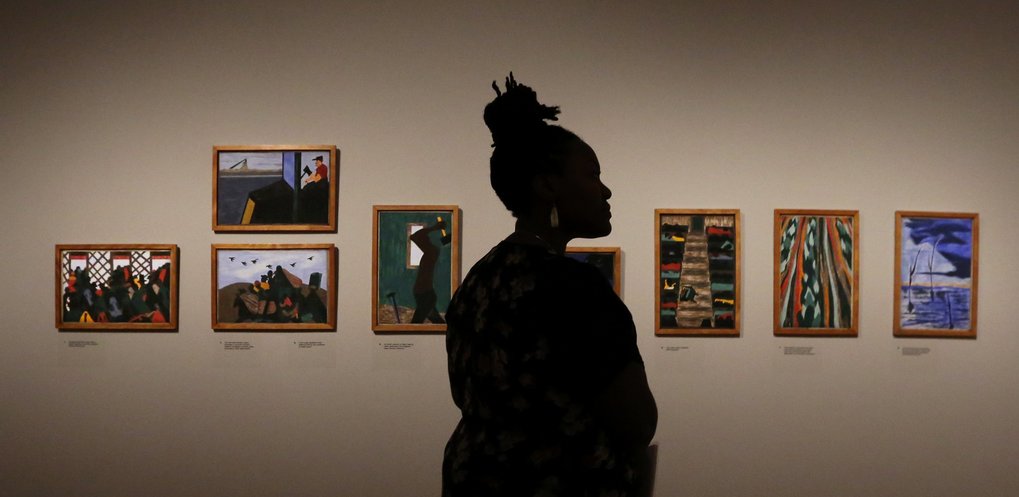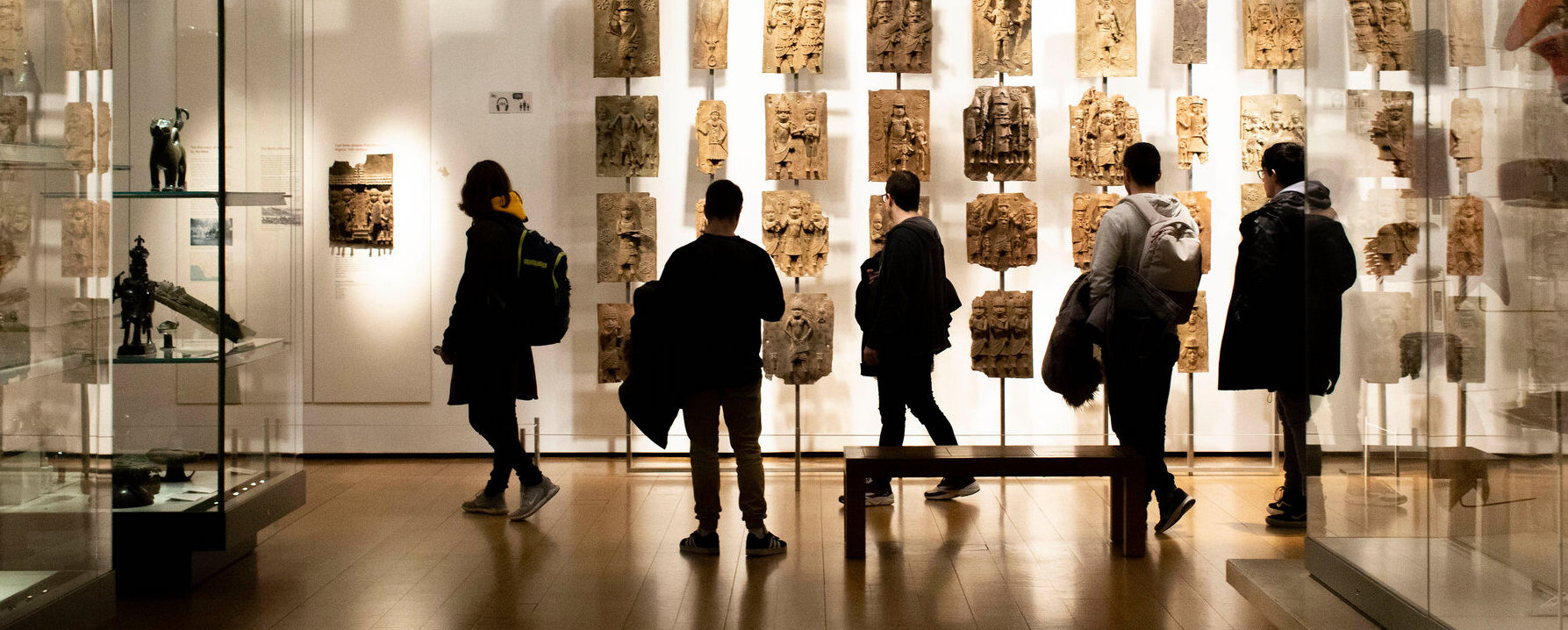
This assignment takes our first “visual analysis at home” exercise a step further. For this assignment you will create an illustrated essay that closely examines one work of art from an NYC museum collection, linking the visual analysis to the artwork’s socio-historical context.
Stage 1: Research
- Choose a work of art, in any medium, made in any period, in any place. The only criteria is that the piece MUST be a work by a professional artist in an NYC museum collection or a major work of architecture that you can conduct historical research on– no art by friends or family or the artist exhibited in your local coffee shop.
- Browse the online collections of the museums (you can find a list of NYC art museums in the “resources” section of the Commons site).
- Spend time closely observing the work. If you feel comfortable visiting the museum to see the work in person, I encourage you to do so (but this is not a mandatory criteria)
- Begin by creating a list of questions that you would like to explore about the piece. Below are some suggestions but these may not all apply to your work or there may be others of interest:
- How was this work made? What methods or techniques were used?
- Research other works from the same time period or other works by the same artist. How does this compare? Is this typical of the style or unique?
- Research the socio-political context. How does the work reflect its time period?
- Think about its place in the museum. How did the piece get to where it lives today? Why is this piece special or unique for it to be collected by the museum and how does it connect to the museum’s overall collection?
Stage 2: Writing
Now, begin writing your essay. First, conduct a formal analysis of the artwork, describing what you see using visual art terms. Then, consider readings such as the ones below (note that not all will apply!) There are more ways to read a work of art – these are just some examples.
- Material consideration – materials are not just about what a work is made from but also materials can have meaning or they may have historical significance that should be considered in a close reading
- Audience/reception – how was this work received and understood at the time it was made?
- Social history – what is the socio-historical context for your work that might affect the work and/or the artist (where was it made? What was the political and religious situation?)
- Feminist reading – examining the subject and/or artist through the lens of feminism
- Marxist reading – examining the subject and/or artist through the lens of class and social structures of power
- Critical race theory – examining the treatment of race in the subject of the painting and/or how it has been understood by scholars in the past (who often ignore race or gave racist readings of paintings)
- Colonialist reading – how did colonialist or imperialist concerns affect the artist or the subject of the work, or possibly the materials used or the movement of the work?
Stage 3: Formatting
- Times New Roman font, 12 point size, double spaced, 1 in. margins, 2-3 pages (500-750 words)
- Remember to put identifying information on your paper! (name, title, course)
- Include an image of the artwork (or multiple if the work is three dimensional or needs a close-up view) and any supplementary images of the work on display in the museum as you find necessary. You can use as many images and details of images as you want to illustrate your reading.
- Your images should be captioned with: artist, title, date, medium– and for details of the work, note what we are looking at “detail off…”
- Sources must be cited in the essay or it will be considered plagiarism. Include a complete bibliography of your sources at the end. The majority of the essay should be written in your own words (ideas of others still cited of course); only use direct quotations when the words of the author are something unique that you can’t express as well yourself (and it should be in quotation marks and cited, of course). Refer to the “Citing your sources” section under the “Research Toolkit” menu on the CUNY Commons site for more guidance.
- Email your paper to kmehta@gradcenter.cuny.edu as word doc or PDF file titled “Name_Close reading”.
Grading rubric:
- Argument: I’m looking for a complete reading of the artwork that draws the reader into the piece, and how compelling your argument and ideas are.
- Evidence: How effectively you link your analysis to specific art historical facts and information, and whether your sources are correctly cited. Any papers without citations will receive a failing grade.
- Writing Style: Your writing should be clear, vivid and well-edited. Use a consistent voice and sentence structure to make your argument stronger. It should be proofread.
- Organization: Your paper should be clearly structured so that your thesis statement and primary ideas are evident to the reader.


